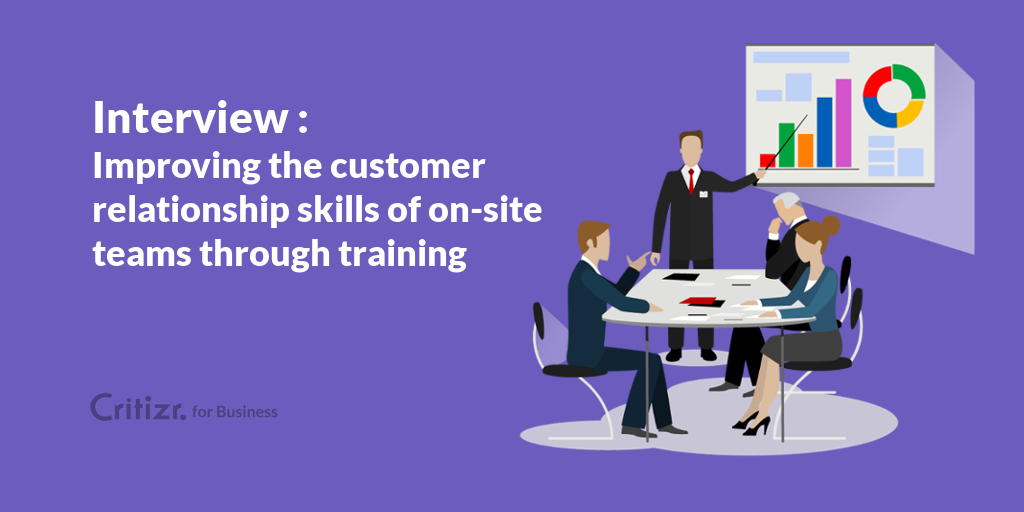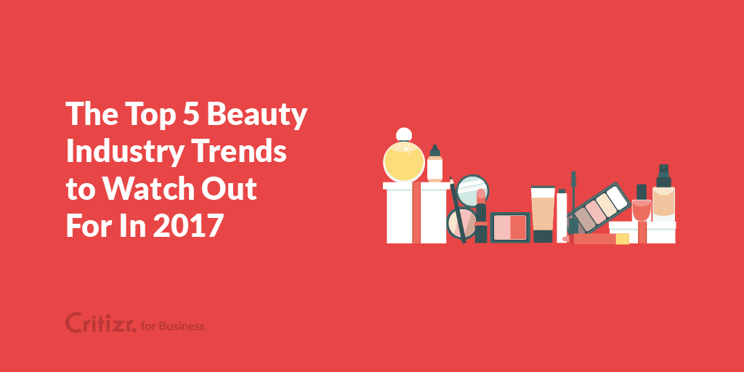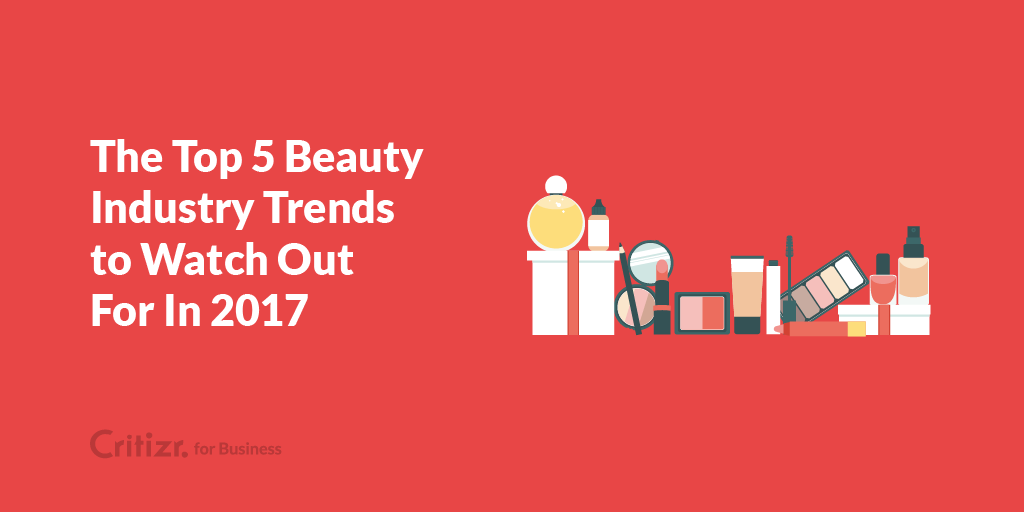
Solutions
Solve your most critical customer experience challenges

Marketing Manager - France


With a growth spurt of 4% in 2016, the international beauty and cosmetics industry is doing well. Valued at an estimated €205 billion, new markets in particular are driving the industry forward. New needs, arising out of urbanisation and changing consumer habits under the influence of social networks, are leading to constant innovations in the beauty industry. With that said, what are the hottest trends to keep in mind for the remainder of 2017?
This word is popping up everywhere in business these days: a steady progression towards a more personalised approach can be seen across industries, from production to communication sectors. The cosmetics industry is no different.
The Institute of Personal Care Science, a world-renowned educational organisation for the international cosmetics industry, made the following statement: “Consumers want a product that suits their needs, lifestyle, skin, complexion and look. For developments in 2017, find out how you can go about personalising or providing personalised options for your consumers.”
Plenty of personalisation trends are out there already. Customisable skin care regimes with active ingredients give customers an à la carte selection. Depending on their skin type, customers can combine a cream, designed for a larger surface area, with a specialised serum. By associating products, the brand provides unique combinations adapted to each individual.
Customisable makeup is also a thing. Cosmetics manufacturers are creating foundations that can be tweaked to suit the skin tone with videos online demonstrating how to obtain the right shade. Lastly, consumers may also adjust their perfume by adding small concentrated doses to a base, adapting it to their daily preference.
It’s the ultimate trend right now—make-up is everywhere. For several years now, makeup has been skyrocketing within the cosmetics industry. On an international scale, make-up has seen a record growth of 8.4% across all geographical areas. According to research conducted by L’Oréal, the makeup industry is progressing six times faster than the cosmetics industry as a whole here in Western Europe. This refers to every sector of the industry including luxury, mass-produced and professional.
An explosion due especially to the birth of generation Z. Selfie- and social network-savvy, this age group hold their image and appearance in high regard. They're changing the norm, constantly keeping up with the latest trends and creating a buzz around new products and looks.
The makeup industry is taking over and lipstick is the star of the show! With 1.5 billion makeup products for lips sold in 2016, it’s worth applauding the staggering growth rate of 13.6%.
Lipstick is the industry’s leading lady, and that’s not all—these products possess major growth potential. In certain geographical areas, the penetration rate of the product remains relatively low. In France, only 60% of women use at least one makeup product for lips per year. In Brazil, the rate is 50% while in China, it’s 28%. We're pretty certain that we haven't heard the last of lipstick yet.
We know, the popularity of ethical products is nothing new. The advent of Fairtrade and organic products is not just a fashion trend, it’s a lasting phenomenon. Cosmetics manufacturers are developing their range of products to meet an increasing consumer demand for ethical products.
L’Oréal, the world’s leading beauty brand (go France!), has recently made its Urban Decay brand a cruelty-free franchise. That means zero products are tested on animals. Vegan makeup is also hot on the radar—an increasingly popular trend in recent years with the arrival of many new brands and extensive media coverage on these products.
Environmentally-friendly products are everywhere now too. Cosmetics manufacturers have to work towards actively contributing to international environmental efforts. Using sustainable resources, reducing the carbon footprint and making recycled packaging are key environmental issues for 2017.
A trend that addresses a real consumer need: makeup that can withstand any daily obstacle and look perfect at all times. Long-lasting products are prized by the most common makeup consumers: these women, aged between 20 and 35, are constantly on social media.
The trend is all over social media; see the evidence for yourself with the recent “Water Blend Challenge.” Launched by Make Up For Ever, the challenge involves testing the longevity of the brand’s foundation during exercise or household chores, for example. Well-known bloggers including Sananas and Lufy have taken up the challenge.
Long-lasting makeup, a new challenge for cosmetics manufacturers that need to develop pollution-, water- and sweat-resistant formulas. R&D teams are also faced with the challenge of devising resistant products without negative effects: products that won't stain clothing or be difficult to remove.
The beauty industry has been steadily growing for several years now; emerging markets in Asia, for example, have really driven the industry forward. It’s a saturated and highly-competitive market with a penchant for innovation. Constantly adapting to customer expectations has become essential for survival.
Hear about our upcoming events and read the latest success stories from our clients.
